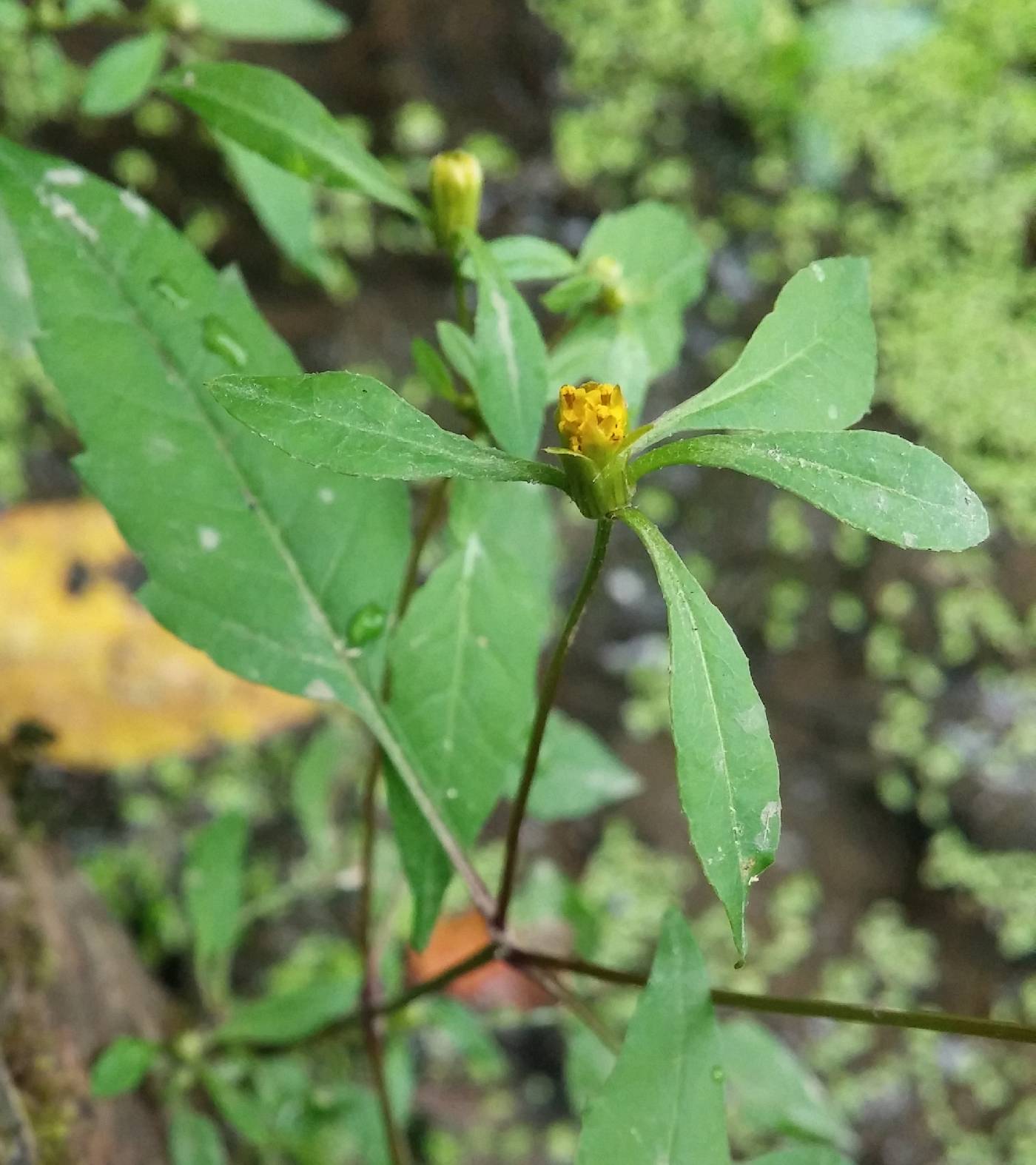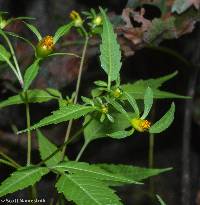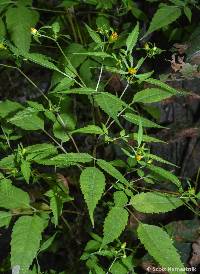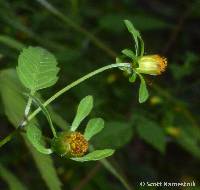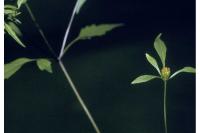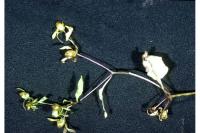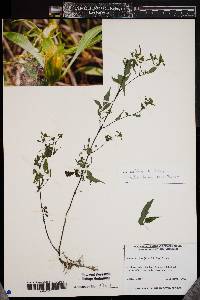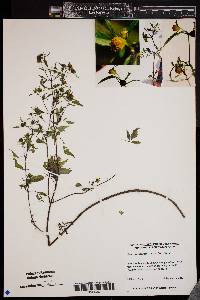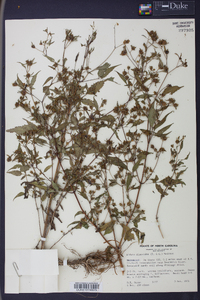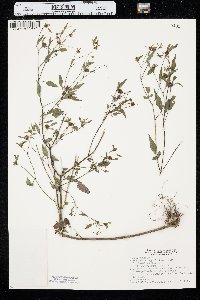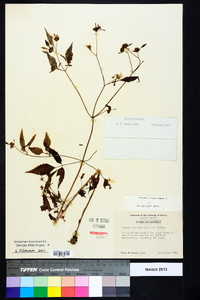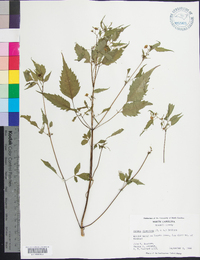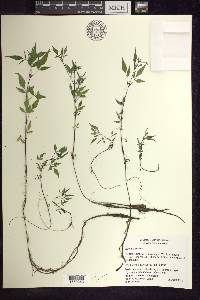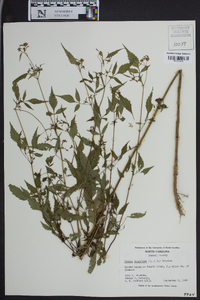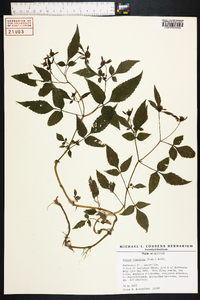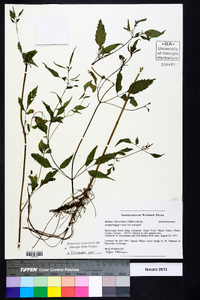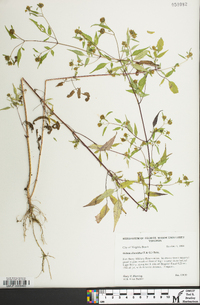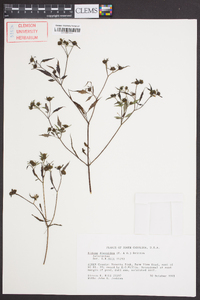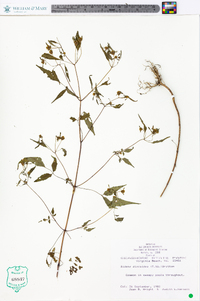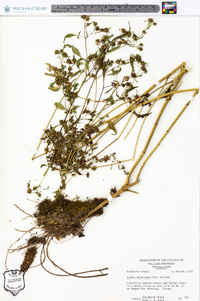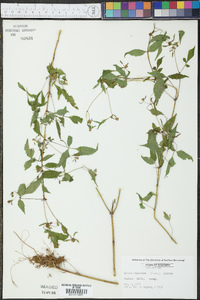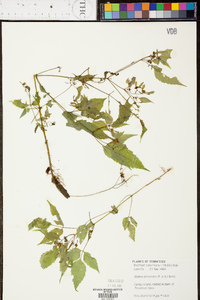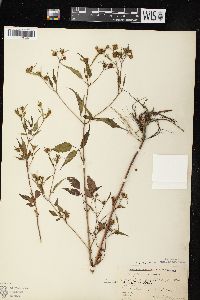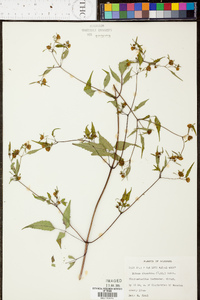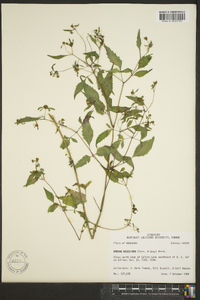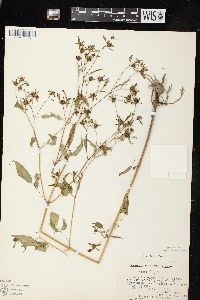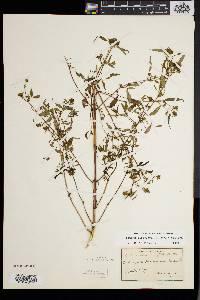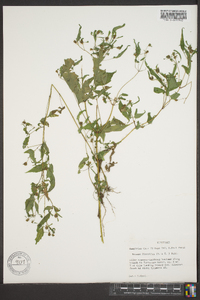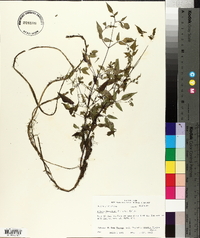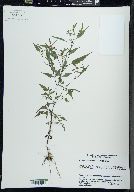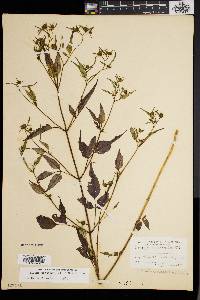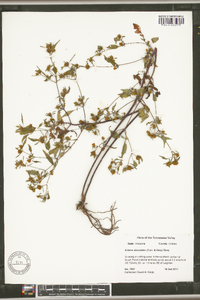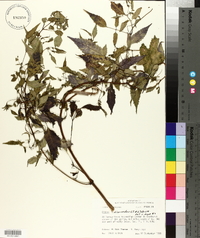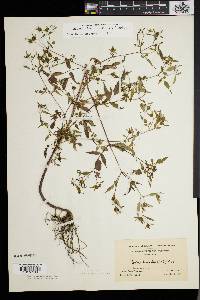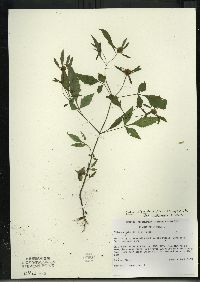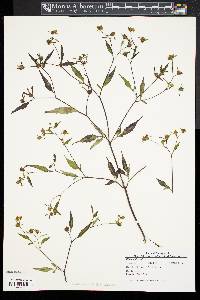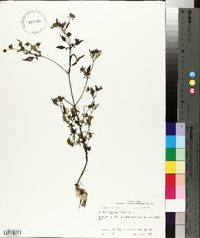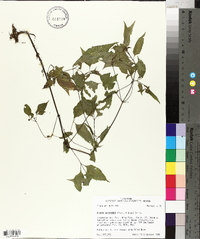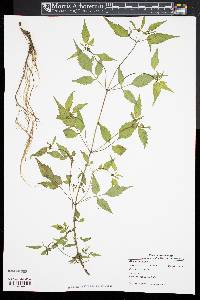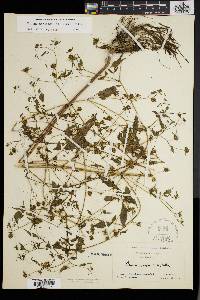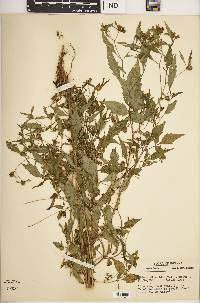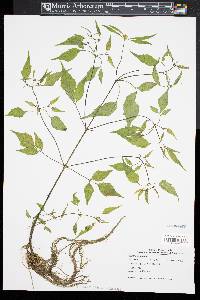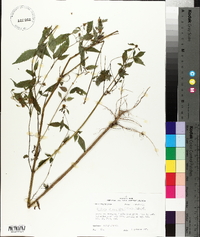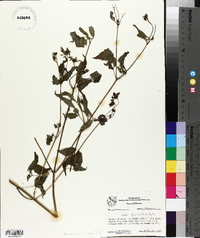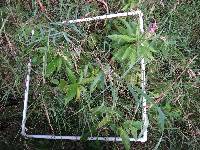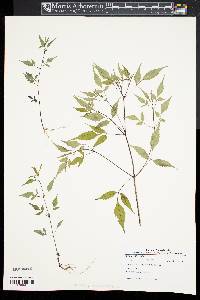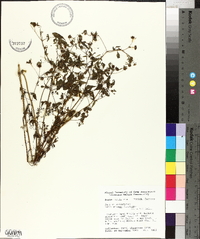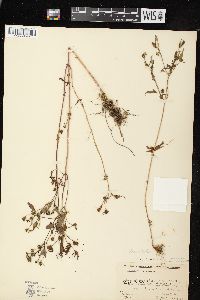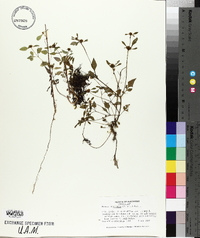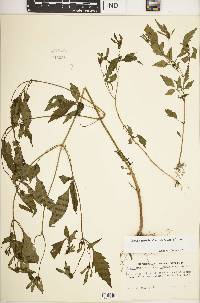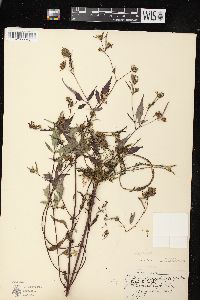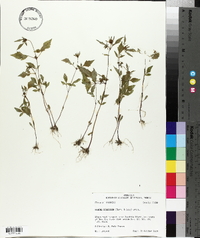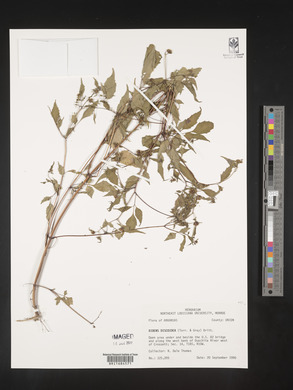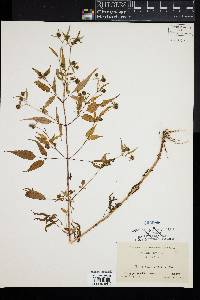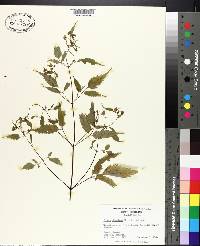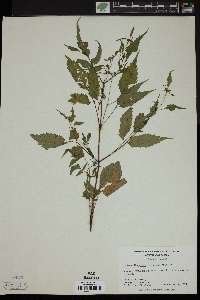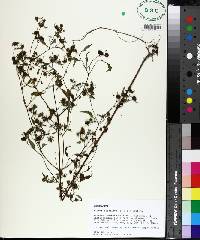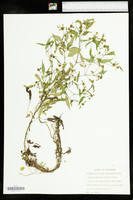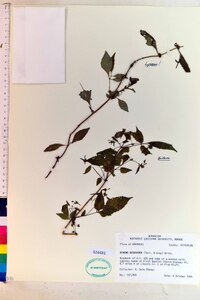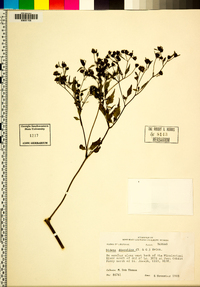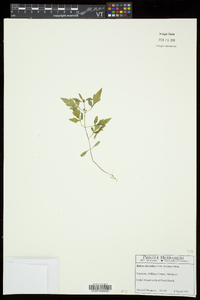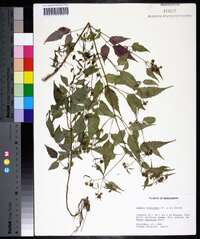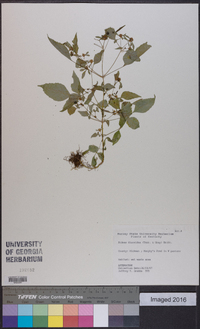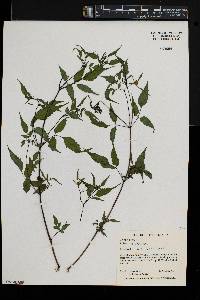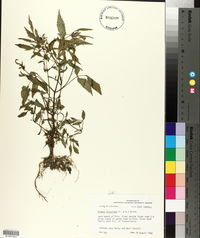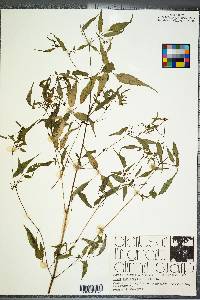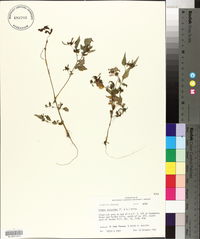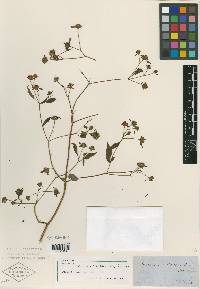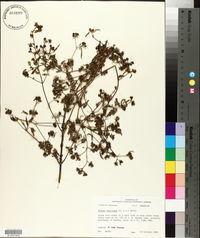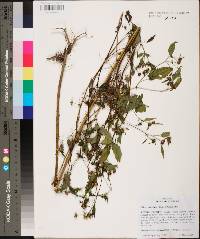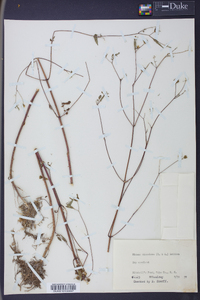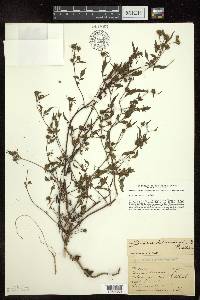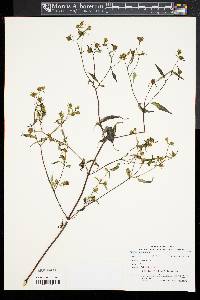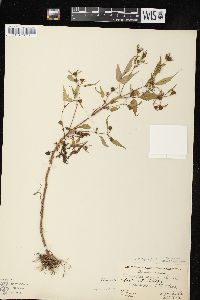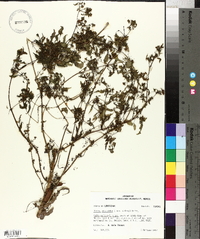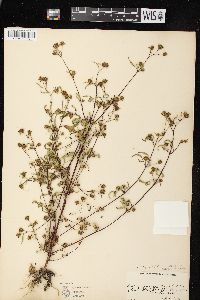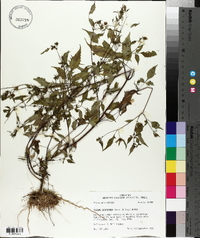
|
|
|
|
Family: Asteraceae
Small Beggarticks
[Bidens tenuissima, moreCoreopsis discoidea] |
Annuals, (10-)20-60(-180) cm. Leaves: petioles 10-40(-60) mm; blades deltate to lance-ovate overall, 30-80(-100+) × 10-30(-80+) mm, usually 3-foliolate, leaflets petiolulate, lance-ovate to lanceolate, (10-)20-50(-100) × 5-20(-40) mm, bases cuneate, ultimate margins usually serrate, sometimes ciliate, apices acuminate to attenuate, faces glabrous or hirtellous. Heads usually borne singly, sometimes in 2s or 3s. Peduncles 10-20(-50+) mm. Calyculi of (3-)4(-5+) ± appressed, spatulate to linear, seldom foliaceous bractlets or bracts (3-)12-25 mm, margins seldom ciliate, abaxial faces usually glabrous. Involucres ± hemispheric, 4-5(-7) × 4-6(-9) mm. Phyllaries 5-7, oblong to lanceolate, 4-6+ mm. Ray florets 0. Disc florets (10-)15-20+; corollas ± orange, 1.5-2 mm. Cypselae blackish to red-brown or stramineous, ± flattened, linear to narrowly cuneate, outer 3-5 mm, inner 4-6+ mm, margins not distinctly ciliate, apices ± truncate to concave, faces ± tuberculate, antrorsely strigillose; pappi of 2 ± erect, antrorsely barbed or smooth awns (0.2-)1-2.4 mm. 2n = 24. Flowering Aug-Oct(-Nov). Ponds, swamps, other relatively wet sites; 10-300 m; N.B., N.S., Ont., Que.; Ala., Ark., Conn., Del., D.C., Fla., Ga., Ill., Ind., Iowa, Ky., La., Maine, Md., Mass., Mich., Minn., Miss., Mo., N.H., N.J., N.Y., N.C., Ohio, Okla., Pa., R.I., S.C., Tenn., Tex., Vt., Va., W.Va., Wis. Bidens discoidea is not nearly as variable morphologically as the closely related B. vulgata or B. frondosa. It differs from B. frondosa in having smaller heads, cypselae with shorter, antrorsely barbed awns, fewer phyllaries and flowers per head, sparse indument, and leaves with fewer, more acuminate leaflets. Both B. discoidea and B. frondosa differ from B. vulgata in texture of flowers, in heads, and in shapes and surfaces of cypselae (M. L. Roberts 1982, 1983; M. G. Hickler 1999).
Glabrous annual 3-8 dm; lvs thin, trifoliolate, on petioles 1-6 cm, the lfls (or at least the terminal one) petiolulate, lanceolate to lance-ovate, serrate, acuminate, the terminal one the largest, to 10 נ4 cm; heads numerous, small, discoid, the disk 3-10 mm wide; outer invol bracts 3-5, linear-spatulate, leafy, much surpassing the disk, scarcely or not at all ciliate- margined; achenes narrowly cuneate, short-hairy, 3-6 mm; pappus of 2 antrorsely setose awns to 2 mm, or nearly obsolete; 2n=24. Wet places; n. N.S., s. Que. and Minn., s. to D.C., Ala., Okla., and Tex. Aug., Sept. Gleason, Henry A. & Cronquist, Arthur J. 1991. Manual of vascular plants of northeastern United States and adjacent Canada. lxxv + 910 pp. ©The New York Botanical Garden. All rights reserved. Used by permission. From Flora of Indiana (1940) by Charles C. Deam Infrequent throughout the lake area and probably local in the remainder of the state. Most of my specimens grew on old logs in dried-up swamps. The species is generally found on the borders of dried-up swamps, in wet woods, and on the borders of lakes. ...... Indiana Coefficient of Conservatism: C = 5 Wetland Indicator Status: FACW |
This project was made possible in part by the Institute of Museum and Library Services [MG-70-19-0057-19].
Powered by Symbiota

